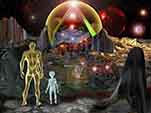Dear RM Agents and Readers,
Where does the Lyme Illness take its name from?
http://www.niaid.nih.gov/topics/lymedisease/understanding/pages/intro.aspx
Best Lyme information on the web is at: http://lymesentinel.blogspot.com/
And a book I haven't read but is on my list:)
http://www.amazon.com/Lab-257-Disturbing-Governments-Laboratory/dp/0060011416
http://www.samento.com.ec/sciencelib/4lyme/lab257.html
A Brief Synopsis by by Michael C Carroll:
A Brief Synopsis
Lab 257 reveals the frightening true story of an unknown island situated in the shadow of New York City, nestled within the playground of America's elite, the Hamptons.Unveiled as a Cold War biological warfare laboratory, Plum Island struggled for half a century in the name of animal science for the U.S. Department of Agriculture, and is now in the hands of the new Department of Homeland Security. Yet its achievements have been marred by outrageous biological and environmental mishaps. A shoddily built and poorly managed germ lab that threatens our environs with biological and ecological pollution, Plum Island remains -- at this very moment, as Lab 257 shows -- a ticking time bomb.
This book probes the insidious connections between the deadly West Nile virus, the origins of debilitating Lyme disease, and a little-known but catastrophic duck virus. The conventional wisdom surrounding the 1999 West Nile virus outbreak is refuted with evidence that shows the epicenter occurred not in Queens County, New York, but rather a stone's throw from the Plum Island laboratory. The book also documents large-scale tick experiments conducted on Plum Island contemporaneously with the initial outbreak of Lyme Disease in 1975, on the heels of a proven virus outbreak that occurred on Plum Island in 1978. Finally, Lab 257 explores the link between Plum Island and the introduction of an exotic virus that appeared out of nowhere in 1967 and eliminated the once-famous Long Island duck industry. The connections are probed with current and former Plum Island scientists, the discoverer of the Lyme disease bacteria, experts in animal and human disease, investigative journalists, and local ombudsmen.
One of the towering points of the book, "Meltdown," is the story of six workers who were trapped in Lab 257 for 32 hours in the midst of a force-three hurricane in August of 1991. Hit hard by the hurricane, a biological storm erupted inside of the lab, and it suffered a literal meltdown. As the men were commended for their efforts to save Lab 257 from absolute destruction, they were summarily fired. Lab 257 chronicles the tribulations of workers Phillip and Shine, who fell strangely ill after dueling with the hurricane. The government refused to assist in their medical diagnosis, denied their sicknesses, and denied the very fact that a biological meltdown occurred inside Lab 257 on that fateful night.
The book also unearths the ties between Plum Island and the Third Reich. It tells the story of the island's unholy liaisons with Nazi Germany's top germ warfare scientist, how he was smuggled into the United States after World War II to work for the USDA and the military, and how his vision resulted in the creation of Plum Island.
Lab 257 is a number of things: it's the story of hard-working regular people, trapped in a lab that suffered a literal biological meltdown during a violent hurricane and then fell mysteriously ill; the story of the island's biological warfare past with the U.S. Army and link to the Nazi's top germ warfare scientist (smuggled into the U.S. after World War II under a top-secret program called Project Paperclip); the story of three infectious disease outbreaks that occurred perilously close to Plum Island (in the 1960s (the duck virus), 1970s (Lyme disease) and 1990s (West Nile virus), so close to the point where it cannot be ruled out as the source; the story of two proven additional virus outbreaks; a shoddily built, poorly managed, and crumbling lab that remains a threat to the surrounding environs; and a story of ecological pollution that threatens our air and water.
It's also the story of great scientific achievement marred by all the above, the account of a great scientist and leader who led the laboratory, who was beloved by the 300-plus employees there; and the tale of his successor, who cared more for his own advancement than the safety of those under his keep or protecting the public-at-large.
Finally, it's a call to action: at the end, Plum Island remains "a ticking biological time bomb," as one source puts it. Lab 257 demonstrates that, despite its shocking revelations, there's still time to dismantle the bomb.
For more information see www.lab257.com
--------------------------------------
Voltaire Morgellons articles, read for yourself:
http://www.voltairenet.org/article165450.html
http://www.voltairenet.org/article165822.html
http://www.voltairenet.org/article166027.html
the K problem
http://www.voltairenet.org/IMG/pdf/the_K_problem.pdf
Many Blessings,
CrystalRiver






































